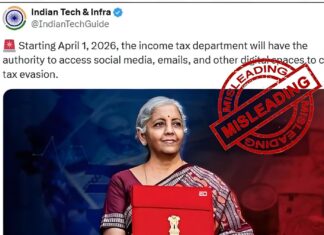If tumbling Chinese stock markets and weak quarterly earnings of India Inc. were not enough, the Indian stock markets are now getting spooked by the P-Note scare.
Last week, a Special Investigation Team (SIT), on orders of the Apex court, was asked to submit a report to suggest measures to curb the flow of black money into the markets. The SIT in response has recommended ways to regulate the structure of P- Notes and catch hold of their ultimate beneficiaries.
So What’s a P- Note ?
A P-note or Participatory note is essentially an Overseas Derivative Instrument (ODI) getting its value from underlying stocks or derivatives. It is issued by FIIs to foreign participants seeking to avoid the complexities of registering with market regulator SEBI (Securities and Exchange Board of India). The holder of such an instrument is entitled to income and capital appreciation from the investment. P- Notes allow foreign players to infuse their money in the markets without having to disclose their identities and other sensitive information to the market regulator. It is the brokerages which put money on their behalf, and issue P- Notes in return.
http://nrimutualfunds.com/p-note1.gif
Functioning of a P- Note
History Anyone ?
In 1992, India allowed FIIs (Foreign Institutional Investors) to participate in domestic bourses. However, entering the trading domain involved going through cumbersome process of getting registered with SEBI. Getting around such hurdles, the FIIs started to issue P- Notes to foreign entities who wished to park their money in India.
Its Significance –
Due to its simplicity and added advantages of anonymity, P- Notes turned out to be the preferred investment vehicle for participating in the Indian markets. So much so, that at their peak in 2007, just before the culmination of the sub-prime crisis, P- Notes constituted more than 55% of total outstanding assets of foreign investors, standing at Rs 659,570 crore.
The following proved to work in favour of India –
- Introduction of P- Notes brought with it a slush of foreign funds, primarily on account of easy entry and exit, at less or no formalities.
- Increased foreign investment for the country, suffering high current account deficit (almost 5% of GDP), proved to be a boon. Savings and foreign funds are what help make up for the deficit.
- Economy became more liberal. Increased flow of money boosted business confidence and industry.
- New capital meant new technology, global expertise and better products.
In June, 2015, FPIs (Foreign Portfolio Investors), held P-Notes worth Rs 275,436 crore, constituting 11.5 percent of the total foreign assets (at Rs 23,86,457 crore)in the country.
The value of P-Notes, as percentage of total assets held by foreign portfolio investors, has declined in the past few years. This is partly due to the government’s rising vigilance over the end-beneficiary of the P-Note holder.
So Why Restrict Them – The Black Money Angle
Everything is not that pretty. By escaping the market regulator and KYC norms for trading, P- Notes are alleged to being in illicit and blood money. Apart from the foreign investors, terror groups, Hawala money, and unaccounted incomes of shabby private corporations and individuals have seen daylight in Indian markets.
With the European Governments (read Swiss and Liechtenstein), now wanting their banks to do away with grey dealings, it is becoming difficult to keep the money outside. With India set to break on the upside, what better way than to bring the money back home.
http://www.timescontent.com/photos/preview/147469/FIIs.jpg
An Image in early 2009 showing Former SEBI chief
Mr. C.B. Bhave pondering over the P- Notes issue
The Government’s Stand
In 2007, a similar proposal was set forth by SEBI. On the next opening day i.e. October 17, 2007, the markets went into spiral and dragged down 9% within a minute of opening trade. Though the markets, after assurance of then FM P.Chidambram, recovered, the markets remained volatile throughout.
This Monday’s fall of 510 points of the Sensex (approx. 2%), resurfaced the fear on account of regulations on P- Notes. The incumbent FM Ajay Jaitley, was forced to make a statement declaring that no knee-jerk action would be taken.
Way Out –
While it is not difficult to appreciate the concerns of FIIs and FPIs, subjecting themselves to greater scrutiny and checks would hurt no one. At the same time, the Government shall simplify the entry of FIIs and do away with over the top information seeking. India has always been dependent on foreign monies and would continue to do so in the foreseeable future.
A greater transparency but easier norms to support foreign investment should be the way out.


































